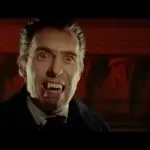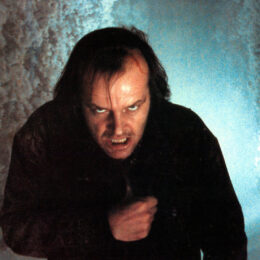THE MIST. Full-blooded horror based on Stephen’s King work
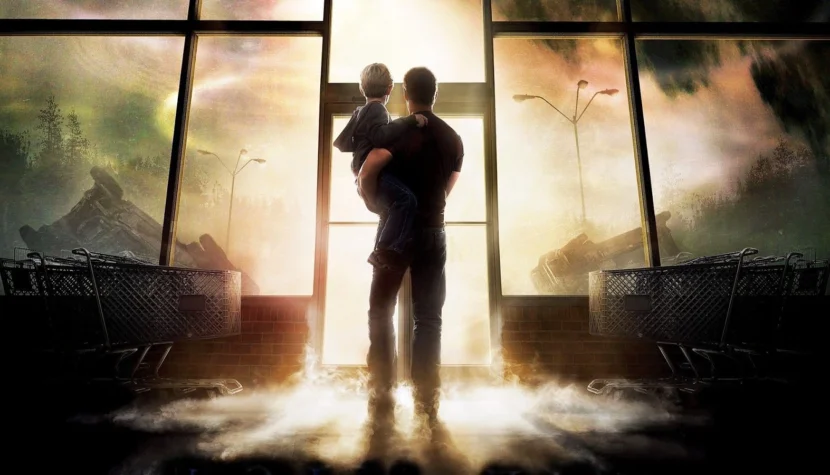
Years ago, with no small amount of apprehension, I watched the advertising campaign promoting yet another film based on the work of the American master of horror, Stephen King. My concern was all the greater considering that the previous film based on his prose, 1408, had turned out to be a mediocre production focused on showcasing the capabilities of silicon circuits. During Mikael Hafstrom’s creation, we were not threatened by a powerful depression, but a smile of contentment on our faces couldn’t have appeared either. After leaving the movie theater, I wondered if materializing King’s characteristic and intriguing world is possible in today’s times. Can something on the level of Brian De Palma’s Carrie be created in the era of the horror crisis, both in literature and cinema?
It turns out that the recipe for combating the embarrassing level of adaptations contains only two words: the first is “FRANK,” the second – “DARABONT.” After the excellent The Shawshank Redemption and The Green Mile, Frank Darabont returns and once again triumphs in a battle where the vast majority fall on the boards at the scriptwriting stage. Despite the fact that the trailers and posters rather suggest the director’s name, my fear of another cinematic disappointment did not wane and even intensified several times. The terrifying fact was that Darabont undertook to make a film that must become a full-blooded horror. The catch was that The Shawshank Redemption and The Green Mile were perfect adaptations but came from a different pole of King’s creativity. They didn’t feature ghosts, demons, or zombies; the monsters were ordinary people.

In The Mist, it’s completely different; the monsters take a form diametrically different from human. The setting also changes – a prison cell is replaced by a provincial supermarket. Besides their inner battle with their own conscience, the characters confront the bloodthirsty creatures emerging from the impenetrable depths of exceptionally thick mist that appears like a bad dream – from nowhere and for no apparent reason. Enclosing a group of at least thirty people in the doubtful resilience of the store walls. It seemingly appears that all of them are individuals adapted to living in society, but the perspective of meeting a hooded messenger wielding a sharpened scythe reveals their true nature.
And it is precisely in the study of the behaviors of characters trapped in a tin box, people threatened from all sides by creatures whose existence no one knew about, that the strength of Frank Darabont’s film lies.
Related:
The director realizes that the monsters are an important element of the plot, but he understands that they are psychologically uninteresting figures that cannot become the cinematic epicenter – the focal point around which the plot would revolve. He builds the story around people and their reactions to the situation at hand. All the organisms prioritizing tearing apart as many townspeople as possible become mere background for the real horror, which begins to unfold among the store shelves. Worse than the creatures emerging from the mist are the people who fall victim to them. The vast majority of them, desperate due to the situation, start analyzing it, thus arriving at two elemental questions: why is this happening, and what can be done to end it? The answers are provided on a silver platter by one of the trapped individuals. Playing the role of a false prophet, reciting verses from the New Testament, she befuddles the disoriented people, looking for even the slightest lifeline. In her religious frenzy, she becomes a menace to the community far more than the intruders hiding in the impenetrable whiteness of the mist.
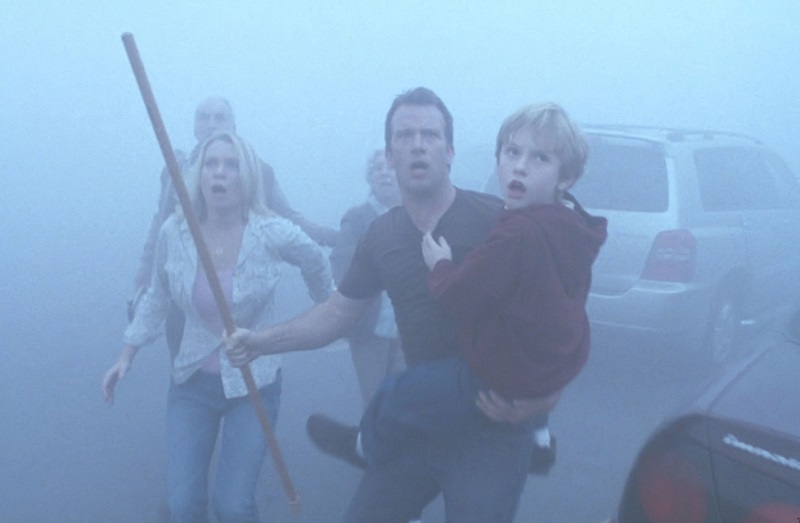
The excellent character construction is not the only factor in favor of Darabont’s adaptation. The film perfectly captures what is most crucial in King’s world – it brilliantly delineates the characters. I can say with a clear conscience that if I were completely unaware that the film is based on a story by an American, after watching it, I would have rushed to check if it’s not an adaptation. The characters trapped in the hypermarket are, so to speak, a showcase of the author’s characters.
So we have a group of people who, in a life-threatening situation, think rationally, resist suggestions, and try to find a way to overcome the desperate situation. Of course, they turn out to be ordinary, even weak people who, in normal circumstances, pass for superheroes. Those who, in normal reality, portray themselves as superheroes, become cowardly in the face of danger. There is also another characteristic character type – a mentally disturbed person who, despite acting with good intentions, does the most harm, whether consciously or not, only Stephen King knows. Darabont directs the actors in such an excellent way that during the movie, we experience almost identical emotions as when flipping through the pages of Skeleton Crew (a collection of stories including The Mist), and Marcia Gay Harden in the role of the crazed Mrs. Carmody achieves the level once presented by Kathy Bates in Misery.
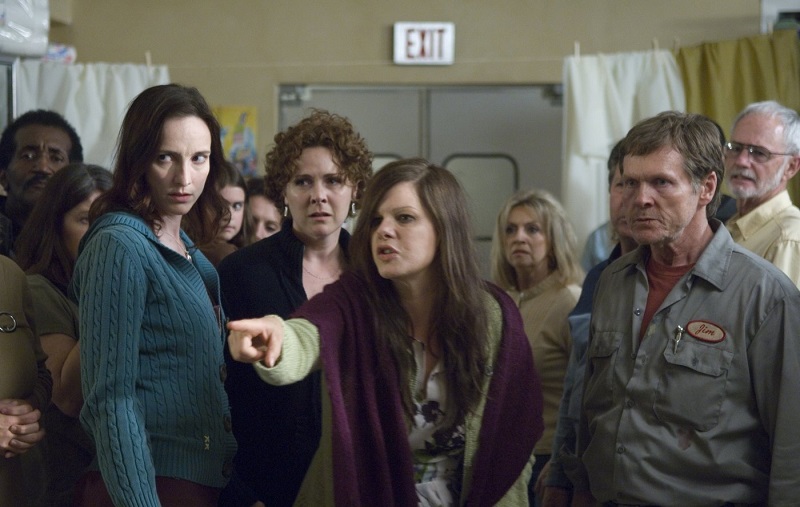
Frank pays homage to the master of horror’s work right from the first minutes of the film when we see the main character working on a poster featuring a gunslinger and a rose against the backdrop of towering towers. This is, of course, a reference to, as the author himself says, his life’s work – a seven-volume saga about the aforementioned gunslinger. He travels through a degraded world where everything, even time, has lost any meaning, heading towards a mysterious tower where he will face himself. “The Dark Tower” saga is a summary of Stephen King’s work, a cycle that combines elements from a vast portion of his novels. After reading it, I whispered to myself, “God, let no one try to make a movie out of this.” After The Mist, I change my mind; I have one candidate.
The only downside of Darabont’s film is the monsters themselves, or rather, the two types of monsters. The first of them only demonstrates its tentacles, grabbing a young man – definitely the worst scene in the film, after which I feared that the director had decided to create a bloody slaughter on the border between horror and comedy. The second type is pseudopterodactyls, which specialize in the devastation of shop windows. Both are balanced by other, much more interesting monsters, and both appear only in short episodes, fortunately.
I recommend The Mist to those who have spent many nights nervously flipping through the pages filled with the master of horror’s stories and to those who have never encountered his work. It is an excellent horror film and an effective antidote to the screen expansion of pale-faced, black-haired masqueraders from the Land of the Rising Sun. Darabont confirms that he is unquestionably the best adapter of Stephen King’s texts – let’s hope he returns to them someday.



